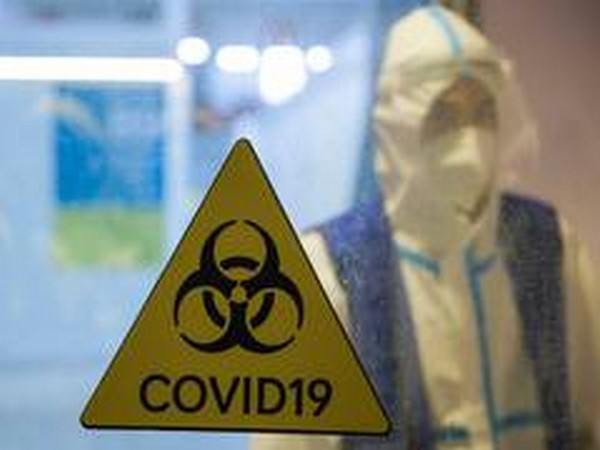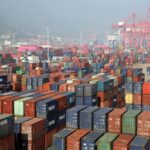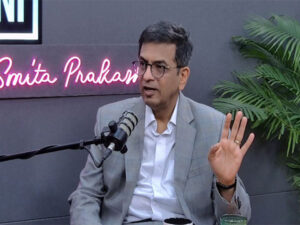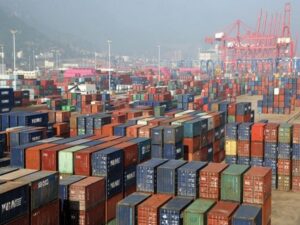
Washington [US], May 19 (ANI): The COVID-19 pandemic has disrupted lives the world over for more than a year and caused over three million deaths and the evidence adds up to a serious case that the virus could have been created in a Chinese lab from which it then escaped, says Nicholas Wade, a noted science writer, editor and author.
In an elaborate article in the the Bulletin of the Atomic Scientists, Wade said that much of the work of Chinese virologists on gain-of-function in coronaviruses was performed at the BSL2 safety level lab, which requires taking fairly minimal safety precautions. The pandemic broke out in the Chinese city of Wuhan in December 2019.
“For the lab escape scenario, a Wuhan origin for the virus is a no-brainer. Wuhan is home to China‘s leading center of coronavirus research where researchers were genetically engineering bat coronaviruses to attack human cells. They were doing so under the minimal safety conditions of a BSL2 lab. If a virus with the unexpected infectiousness of SARS2 had been generated there, its escape would be no surprise,” he said.
Wade, who has worked on the staff of Nature, Science, and, for many years, the New York Times, talked about lack of access to evidence from the Wuhan Institute of Virology, or related labs in Wuhan
“The evidence adds up to a serious case that the SARS2 virus could have been created in a lab, from which it then escaped. But the case, however substantial, falls short of proof. Proof would consist of evidence from the Wuhan Institute of Virology, or related labs in Wuhan, that SARS2 or a predecessor virus was under development there. For lack of access to such records, another approach is to take certain salient facts about the SARS2 virus and ask how well each is explained by the two rival scenarios of origin,” he said.
Wade said in the article in the Bulletin of Atomic Scientists that researchers at the Wuhan Institute of Virology, led by China‘s leading expert on bat viruses, Shi Zheng-li or “Bat Lady,” mounted frequent expeditions to the bat-infested caves of Yunnan in southern China and collected around a hundred different bat coronaviruses.
He said first and foremost, Chinese virologists are to blame for performing gain-of-function experiments in mostly BSL2-level safety conditions which were far too lax to contain a virus of unexpected infectiousness like SARS2.
“If the virus did indeed escape from their lab, they deserve the world’s censure for a foreseeable accident that has already caused the deaths of three million people. True, Shi was trained by French virologists, worked closely with American virologists and was following international rules for the containment of coronaviruses. But she could and should have made her own assessment of the risks she was running. She and her colleagues bear the responsibility for their actions,” he said.
“The records of the Wuhan Institute of Virology certainly hold much relevant information. But Chinese authorities seem unlikely to release them given the substantial chance that they incriminate the regime in the creation of the pandemic. Absent the efforts of some courageous Chinese whistle-blower, we may already have at hand just about all of the relevant information we are likely to get for a while,” argued Wade.
He said China‘s central authorities did not generate SARS2, but they sure did their utmost to conceal the nature of the tragedy and China‘s responsibility for it.
“They suppressed all records at the Wuhan Institute of Virology and closed down its virus databases. They released a trickle of information, much of which may have been outright false or designed to misdirect and mislead. They did their best to manipulate the WHO’s inquiry into the virus’s origins, and led the commission’s members on a fruitless run-around. So far they have proved far more interested in deflecting blame than in taking the steps necessary to prevent a second pandemic.”
Wade said that from early on, public and media perceptions were shaped in favour of the natural emergence scenario by strong statements from two scientific groups. “These statements were not at first examined as critically as they should have been,” he said.
Wade, who refers to SARS-CoV-2 virus that caused the pandemic as SARS2 for short, said that many people know that there are two main theories about its origin. “One is that it jumped naturally from wildlife to people. The other is that the virus was under study in a lab, from which it escaped. It matters a great deal which is the case if we hope to prevent a second such occurrence,” he said.
The article in Bulletin of the Atomic Scientists said that neither the natural emergence nor the lab escape hypothesis can yet be ruled out.
“There is still no direct evidence for either. So no definitive conclusion can be reached. That said, the available evidence leans more strongly in one direction than the other. Readers will form their own opinion. But it seems to me that proponents of lab escape can explain all the available facts about SARS2 considerably more easily than can those who favor natural emergence,” Wade said.
He said it is documented that researchers at the Wuhan Institute of Virology were doing gain-of-function experiments designed to make coronaviruses infect human cells and humanized mice.
“This is exactly the kind of experiment from which a SARS2-like virus could have emerged. The researchers were not vaccinated against the viruses under study, and they were working in the minimal safety conditions of a BSL2 laboratory. So escape of a virus would not be at all surprising. In all of China, the pandemic broke out on the doorstep of the Wuhan institute. The virus was already well adapted to humans, as expected for a virus grown in humanized mice.”
Wade said from early on, public and media perceptions were shaped in favor of the natural emergence scenario by strong statements from two scientific groups. “These statements were not at first examined as critically as they should have been.”
He said a group of scientists wrote a letter saying that ‘Our analyses clearly show that SARS-CoV-2 is not a laboratory construct or a purposefully manipulated virus’.
Wade said in February 2021, a commission of the World Health Organization (WHO) visited China to investigate the origins of the virus.
“The commission’s composition and access were heavily controlled by the Chinese authorities”, he said, adding that its members, including Peter Daszak, president of the EcoHealth Alliance of New York, kept asserting that lab escape was extremely unlikely.
“But this was not quite the propaganda victory the Chinese authorities may have been hoping for. What became clear was that the Chinese had no evidence to offer the commission in support of the natural emergence theory.”
Referring to SARS1 and MERS viruses, who belong to a viral family known as beta-coronaviruses like SARS 2, Wade said they left copious traces in the environment.
“The intermediary host species of SARS1 was identified within four months of the epidemic’s outbreak, and the host of MERS within nine months. Yet some 15 months after the SARS2 pandemic began, and after a presumably intensive search, Chinese researchers had failed to find either the original bat population, or the intermediate species to which SARS2 might have jumped, or any serological evidence that any Chinese population, including that of Wuhan, had ever been exposed to the virus prior to December 2019. Natural emergence remained a conjecture which, however plausible to begin with, had gained not a shred of supporting evidence in over a year,” he said.
“And as long as that remains the case, it’s logical to pay serious attention to the alternative conjecture, that SARS2 escaped from a lab,” he added.
The article in the Bulletin of Atomic Scientists said ever since virologists gained the tools for manipulating a virus’s genes, they have argued they could get ahead of a potential pandemic by exploring how close a given animal virus might be to making the jump to humans.
“And that justified lab experiments in enhancing the ability of dangerous animal viruses to infect people, virologists asserted… These enhancements of viral capabilities are known blandly as gain-of-function experiments.”
Wade said Shi’s work was funded by the National Institute of Allergy and Infectious Diseases (NIAID), a part of the US National Institutes of Health (NIH).
She collaborated with coronavirus researcher Ralph S Baric, and in November 2015 they created a novel virus by taking the backbone of the SARS1 virus and replacing its spike protein with one from a bat virus (known as SHC014-CoV).
The author noted that Shi set out to create novel coronaviruses with the highest possible infectivity for human cells,” said Wade.
Though it cannot yet be stated that Shi did or did not generate SARS2 in her lab because her records have been sealed, but it seems she was certainly on the right track to have done so, the article said.
“It is clear that the Wuhan Institute of Virology was systematically constructing novel chimeric coronaviruses and was assessing their ability to infect human cells and human-ACE2-expressing mice,” the article said quoting Richard H Ebright, a molecular biologist at Rutgers University and leading expert on biosafety.
Wade noted that there is long history of viruses escaping from even the best run laboratories.
“The smallpox virus escaped three times from labs in England in the 1960’s and 1970’s, causing 80 cases and 3 deaths. Dangerous viruses have leaked out of labs almost every year since. Coming to more recent times, the SARS1 virus has proved a true escape artist, leaking from laboratories in Singapore, Taiwan, and no less than four times from the Chinese National Institute of Virology in Beijing.”
Coronavirus has infected over 167 million people across the world and more than 3.4 million people have died due to the virus, as per Johns Hopkins University.
The Bulletin of the Atomic Scientists is an independent, nonprofit media organisation, which focuses on nuclear risk, climate change, and disruptive technologies. According to its website, the Bulletin equips the public, policymakers, and scientists with the information needed to reduce man-made threats to our existence. (ANI)



















